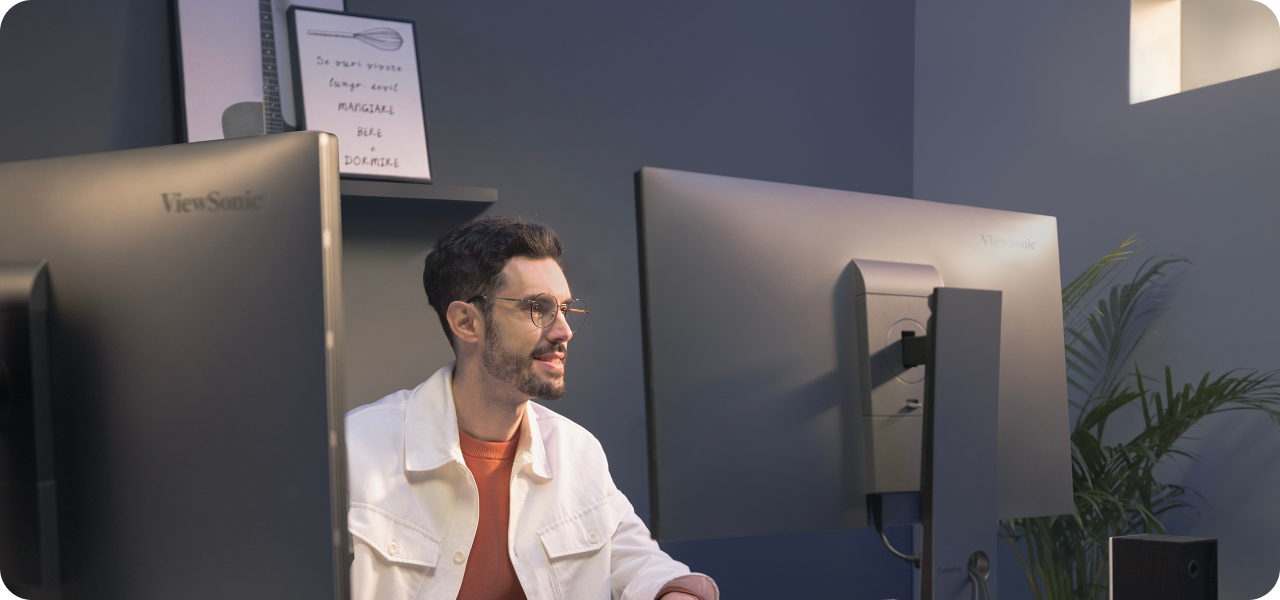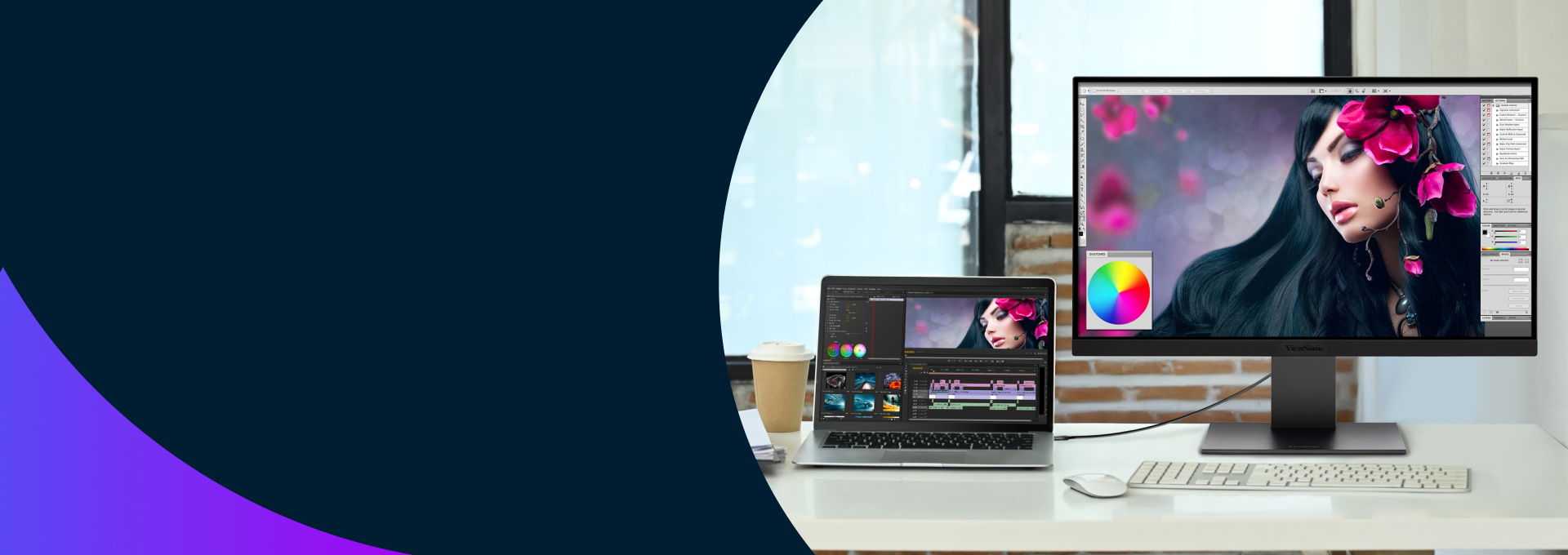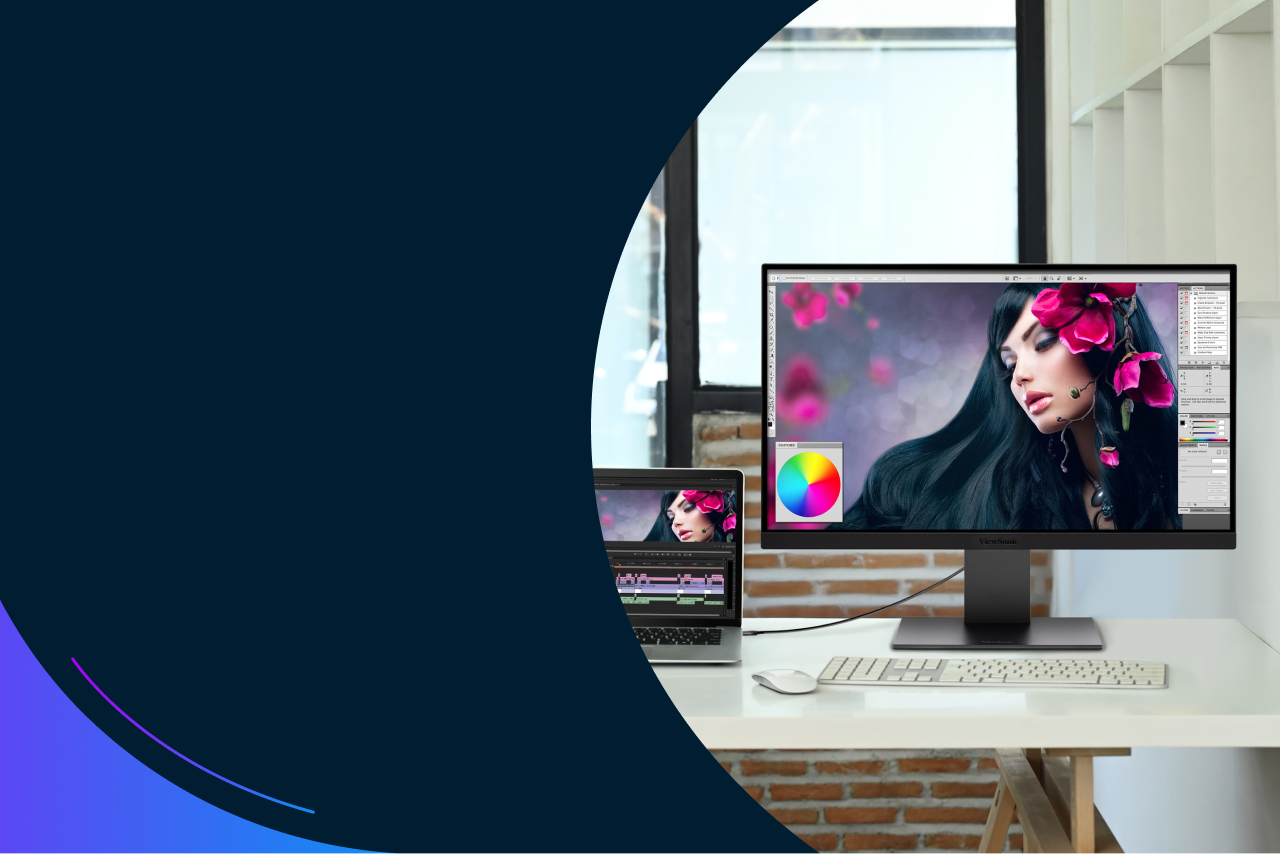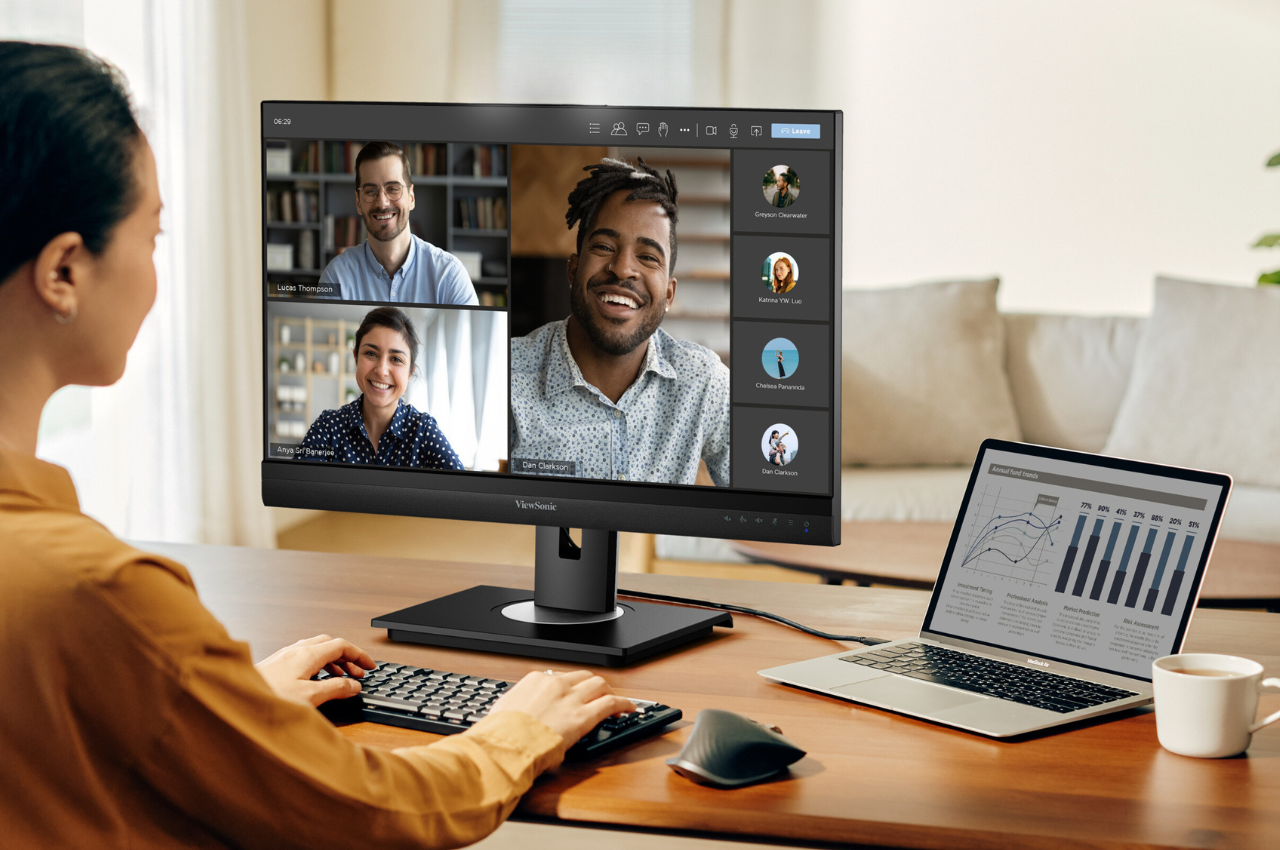Discover key tips for selecting the perfect monitor that will elevate your 3D art and animation, ensuring flawless detail and vibrant color. The post Finding the Perfect Monitor for 3D Art and Animation: The Essential Guide appeared first on ViewSonic Library.
In 3D art and animation, every pixel matters, and the right monitor can make all the difference. Whether you’re sculpting realistic characters or setting the perfect lighting, a great screen helps you catch those tiny flaws, nail the colors, and see your work the way your audience will. Choose the wrong one, and you’ll find yourself constantly second-guessing your every move.
So, if you’re serious about 3D art, it’s time to get serious about your screen. Keep reading to find out what to look for—or check out the ColorPro VP2788-5K monitor and see your 3D art come to life.
Choosing a Monitor with Accurate Color for 3D Art
If you’ve ever spent hours tweaking a shader, only to see the colors look completely different on another screen, you know how frustrating that can be. The problem might not lie in your material setup or lighting—it could very well be your monitor.
When you’re fine-tuning materials, textures, and lighting, you need a screen that reflects exactly what you’re working on. A monitor that distorts colors or hides key details is like flying blind—you simply can’t trust what you’re seeing.
So, what should you look for when aiming for true-to-life colors on your screen?
- Delta E < 2: The lower the Delta E, the more precise your colors. A value of 2 or lower ensures that the monitor’s colors are as true to life as possible.
- Factory calibration: Monitors that are pre-calibrated at the factory offer reliable colors right out of the box, without the need for extra adjustments.
- Hardware calibration support: Using calibration tools like colorimeters ensures long-term color consistency, especially if you’re working on large, professional projects.
But color accuracy is only part of the equation. To truly get the most from your monitor, you also need to consider the color gamut.
It’s not just about how accurately the colors are displayed, but also about how much color your monitor can handle. You need a monitor that can handle a full range of colors without clipping or distorting them.

Color Gamuts Explained: sRGB, Adobe RGB, and DCI-P3
Are you designing 3D art for the web? Printing photoreal 3D renders? Making animations for cinema? No matter what your final medium is, your monitor’s color gamut plays a key role in how your work will look on different platforms.
The color gamut defines the range of colors a monitor can display, directly influencing how your visuals look on everything from mobile devices to large cinema screens. This is why choosing a monitor that supports the right color space is so important for any 3D artist or animator.
Here’s a quick breakdown of the minimum gamut coverage you’ll want for 3D art and animation:
- sRGB (100%): Standard for web and most digital content, offering reliable and vibrant colors for online work.
- Adobe RGB (99%+): This gamut is ideal for photoreal 3D renders, especially those destined for print. The wider color space means more color richness.
- DCI-P3 (95%+): This gamut delivers richer contrast and depth, making it perfect for high-end 3D animation for film, television, or other visual media.
But what if you’re working on cinematic or real-time 3D engines? That’s where dynamic range comes into play, allowing you to enhance the brightness, contrast, and detail in your scenes for the ultimate realism.
HDR Support: Bringing Depth and Realism to 3D Animation
HDR (High Dynamic Range) support is more than just a nice-to-have when it comes to 3D animation. A monitor with HDR support can display a wider spectrum of brightness and color, helping you preview your scenes the way they’ll appear on today’s high-end displays, from mobile devices to cinema screens.
Here’s how HDR can help you during the creative process:
- Accurate lighting and exposure previews: HDR helps you see how lighting adjustments will actually appear on different devices, so you can be sure that your work will look amazing no matter where it’s viewed.
- Enhanced realism in effects: HDR brings effects like bloom, flares, and emissive materials to life, helping you visualize how they’ll look in the final render, adding depth and realism.
- Clearer highlight and shadow details: HDR lets you catch issues like crushed shadows or blown-out highlights while you’re still working, so you can fix them before they make it into the final render.
When you’re working on high-end, detailed animation, HDR ensures you’re seeing every nuance, enhancing the authenticity and depth of your visuals.
And while dynamic range enhances how your work feels, resolution affects how much of it you can see at once.
Monitor Resolution: See More, Do Moe
When it comes to 3D art and animation, the resolution of your monitor plays a huge role in how efficiently you can create. While HDR influences how your scene feels, resolution shapes how clearly and effectively you can build it.
As you work on 3D models, shaders, timelines, and panels, a higher resolution gives you sharper visuals and more space on your screen. You won’t have to zoom in and out constantly to view all the details or shift between windows to see the big picture.
A 4K (UHD) monitor is an excellent starting point, but if you need even more screen real estate and sharper clarity, a 5K (UHD+) display takes your workflow to the next level. The ColorPro VP2788-5K, for example, features a 27-inch panel with a stunning 218 PPI, giving you the ability to view 4K animations at full resolution while still keeping your tools and timelines visible without feeling cramped.
But even the sharpest monitor won’t help if you’re constantly dealing with tangled cables and peripherals. That’s why connectivity is just as crucial as resolution in keeping your workflow smooth.
Monitor Connectivity: Streamlining Your Workflow
Between external drives, drawing tablets, render previews, and dual monitors, 3D production setups can get cluttered quickly. That’s where high-performance connectivity comes into play—not just to maintain speed, but to streamline your workflow and keep everything running smoothly.
Look for these essential features when choosing a monitor that can keep up with your creative demands:
- Single-cable simplicity: Thunderbolt 4 or USB-C with Power Delivery handles high-speed data, video output, and laptop charging all through a single connection.
- Easy dual-display setup: Daisy-chaining lets you add a second monitor without using another port on your laptop or GPU, expanding your workspace effortlessly.
- Built-in ports: An integrated USB hub allows you to plug in tablets, SSDs, and other peripherals without additional cables cluttering your desk.
Both the ColorPro VP2776T-4K and VP2788-5K keep your setup clean and connected with Thunderbolt 4, 100W power delivery, and daisy-chaining. Plus, if you’re managing multiple devices, the VP2776T-4K even comes with a built-in docking hub, letting you switch between laptops, desktops, and peripherals without the hassle.
Final Thoughts: Picking the Right Monitor for 3D Art and Animation
When it comes to 3D art and animation, the monitor you choose has a direct impact on your workflow. With the right display, you can speed up your process and ensure your art looks incredible across all platforms. From color accuracy and 5K resolution to HDR and powerful connectivity, the right features make all the difference. At the end of the day, it’s about having a monitor that allows you to trust what you see—in both preview and final render.
Ready to level up your 3D art? Explore the ColorPro VP2788-5K for unmatched detail or the VP2776T-4K for powerful connectivity, and learn more about the 5K vs 4K difference here.
The post Finding the Perfect Monitor for 3D Art and Animation: The Essential Guide appeared first on ViewSonic Library.








.jpg)










